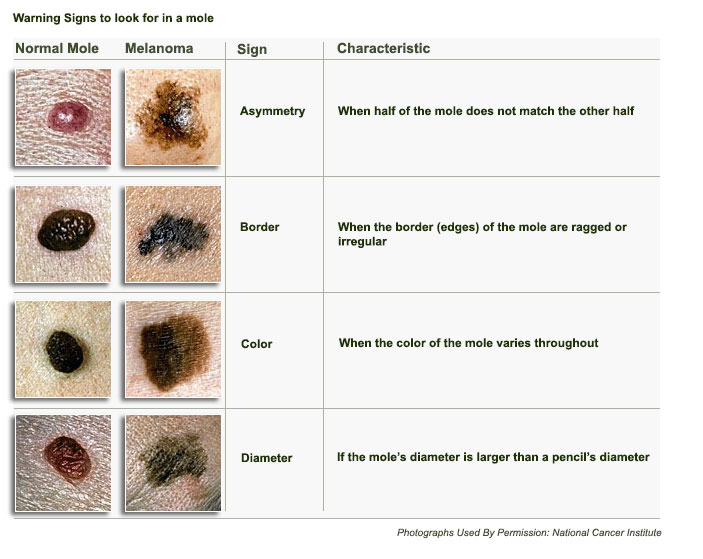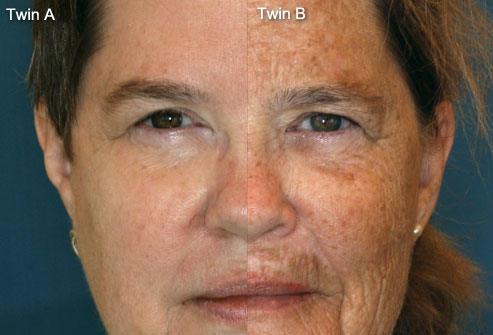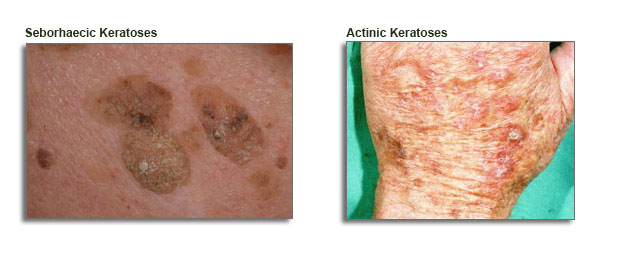In this section we will be covering treatments- laser, IPL chemical peels and topical agents– for pigmentary disorders, including benign photo-pigmentation (sun-damage), melasma (hormonally-induced grey-brown blotchy pigmentation), benign lesions such as seborrhaeic keratoses and potentially precancerous lesions – such as actinic keratoses.
We will be touching on the importance of seeing a physician for diagnosis of these lesions, as staff working in spas with no on-site doctor are NOT QUALIFIED to distinguish potentially cancerous pigmented lesions from benign sun-damage or age spots, and delayed diagnosis or mistreatment of a pigmented skin cancer could have serious consequences for the patient.
At the Lazer Room, all patients with pigmented lesions (brown spots) will be examined by Dr Hyland, a GP with a postgraduate diploma in dermatology and certificate in dermoscopy. If she is in any way concerned, she will refer the patient to a board-certified dermatologist or a surgeon for excision biopsy.
DANGER SIGNS

The last sign E= Evolution- or change in an existing brown spot.
There may be other clues to an underlying skin cancer- eg not all skin cancers are pigmented- or a pattern of benign-looking brown spots may be indicative of an internal cancer or serious underlying systemic disorder– neurofibromatosis, Peutz- Jaeger syndrome, so it is important to have a medical diagnosis before embarking on cosmetic treatments for “brown spots”
| BENIGN PHOTOPIGMENTATION |
also known as PHOTO-AGING occurs on exposed areas of the body; face, neck, chest, hands and forearms.

These Brown spots are the result of years of exposure to UV radiation, which causes diffuse pigmentation changes, and mutations in cellular DNA, which can lead to the development of precancerous and cancerous lesions.
Smokers will develop more extensive and severe sun damage, due to degradation of metalloproteins, which are the building blocks of collagen, plus the carcinogenic effects of multiple chemicals present in cigarette smoke. This accelerates the aging process* and makes them more prone to developing skin cancers- see below:

Identical twins: A non- smoker: B smoker- see difference in skin quality and texture www.webmd.com/smoking-cessation/ss/slideshow-ways-smoking-affects-looks
More information on the Smoking Cessation Program
Treatment of Benign Photo-pigmentation (sundamage)
Treatment options consist of chemical peels, IPL (intense pulsed light), or Fraxel laser.
- A series of chemical peels – 6-10 at 3-4 week intervals can be used for very mild cases, or for persons with dark skin
- Intense Pulsed Light (IPL) – a series of 4-6 treatments 3-4 weeks apart will reduce the pigmentation by targeting melanin. The lesions will temporarily get darker; mild flaking will occur, followed by gradual improvement. A secondary benefit – improved skin texture – has resulted in this treatment being referred to as a PHOTOFACIAL.
- Fraxel Dual, (1927nm laser) is a fantastic new technology which specifically targets superficial pigmented lesions. Even one session –The Fraxel Weekend Peel -will yield a remarkable improvement in pigmentation and skin texture, following a 2-3 day period of flaking. Severe cases will benefit from a second session a month later
- Fraxel Dual (1550nm laser)– can be used for persons with darker skin (Fitzpatrick types 4 &5) and pigmented lesions. IPL should never be used on darker skins, because of the risk of blistering or permanent hypopigmentation.

FRAXEL DUAL: THULIUM 1927 NM : ERBIUM GLASS 1550NM (2-lasers in one)
Laser Skin Resurfacing For:
- Photo-pigmentation (sun spots)
- Melasma
- Actinic Keratoses
- Acne and Surgical scars
- Fine lines and wrinkles
Each component of the Fraxel Dual laser can be used alone or in combination for skin resurfacing. The laser creates thousands of microscopic treatment zones extending into the dermis; the depth and width of these microscopic treatment zones (MTZs) can be varied, between 5-49% of the skin surface can be treated at one time.
Fraxel 1927 is used for more superficial pigmentation ie sundamage; while Fraxel 1550 is used for deeper pigmentation (melasma) or collagen stimulation – facial rejuvenation, scar or stretch mark revision.
Fraxel 1927 (Thullium) superficial ablative laser resurfacing

Before Treatment | Post-Treatment Peeling | After Treatment
| Melasma |
is a brown or bluish-grey skin discoloration typically seen in women aged 25 – 50, who have been exposed to strong sunlight, and is often associated with hormonal factors -pregnancy, birth control pills, or HRT. It occurs mainly on the upper cheeks, upper lip, forehead and chin. The pigmentation is in the deep layers of the skin, and responds poorly to IPL, but good results are seen with Fraxel Dual Laser , specifically the deeper 1550nm (Erbium glass ) component

Melasma can be improved with a series of glycolic peels. Deeper peels carry the risk of post inflammatory hyperpigmentation. Another approach would be the use of prescription bleaching creams, containing azelaic acid, kojic acid, or retinoic acid.
| Seborhaeic Keratoses |
are benign brown-grey warty lesions with a “stuck-on” appearance that are treated by cryotherapy or electrodesiccation/ hygrefraction

| Actinic Keratoses |
can spontaneously regress or may evolve over time evolve into invasive squamous cell carcinoma: They are often found on exposed areas of skin, such as the back of the hands, or on the temples. Treatments include:
- Cryotherapy (freezing)may be used for solitary lesions
- Topical treatments: 5-fluorouracil cream, diclofenac, imiquoid, ingenol mebutate
- Photodynamic therapy IPL or blue light exposure to skin pretreated with a photo sensitizing agent
- Thulium/Erbium Laser (Fraxel Dual)is an option for superficial pigmented AKs (SPAK)
The last 3 options are used for field treatment ie for areas of skin where there are multiple AKs
[elementor-template id=”1606″]
